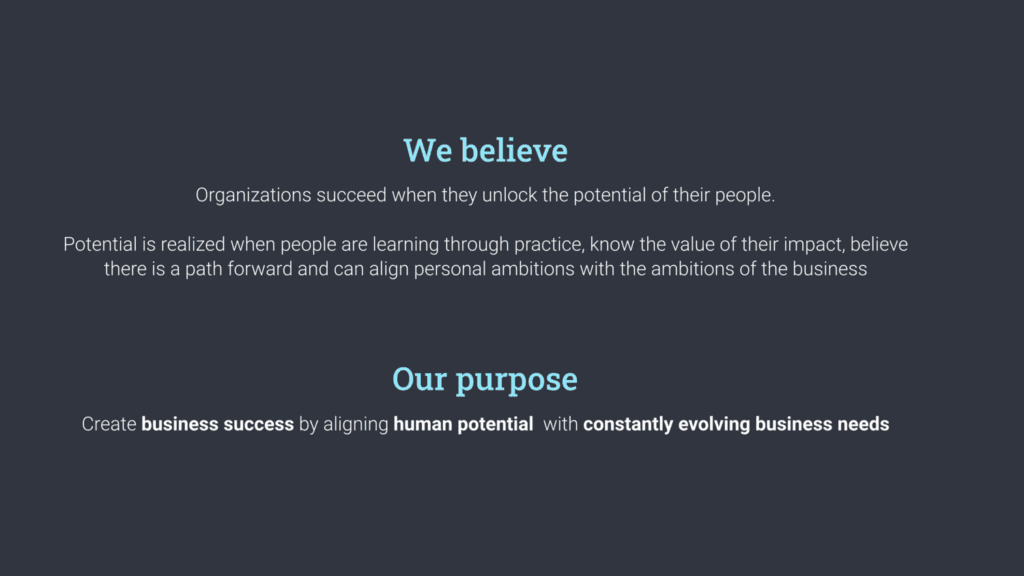Are Your Company Values BS? Here’s How To Do Them Better.
Corporate values are a set of behaviors that a business and its employees agree to live by and hold each other accountable to every day.
Many business leaders and employees are cynical about corporate values — and rightfully so. They often end up being a bunch of words plastered on the corporate website or office walls that mean nothing or don’t reflect how the organization actually operates.
Many business leaders and employees are cynical about corporate values — and rightfully so.
Philip Morris International, a global tobacco company, has corporate values of trust, collaboration, and integrity. Philip Morris is the same company that has been accused many times over the years of marketing its tobacco products to young adults and children. Integrity? That’s a hard one to trust and is just one example of many that shows that values are often a bunch of bull🤬.
When it comes to agency values, how you act speaks louder than what you say. You can throw adjectives on paper all day, but unless you stand behind them and act according to them, they won’t mean anything. Authentic values drive action. They should influence how leaders and employees act every day, especially regarding hiring, setting expectations for and reinforcing desired behaviors, and shaping your company culture. Setting and living by our values is important at Parallax. Doing this is relevant to all businesses, including the digital agencies and technology consultancies that use our product.

Agency values framework: Brainstorm, set, and reinforce your values
At Parallax, we believe that values, when defined and implemented correctly, are fundamental to creating a healthy organization. We went through a collaborative process with our entire team to develop our values — and hold our people accountable to them. Involving our people in this process was essential. Values are aspirational, and your people will reject them and call B.S. if they don’t represent your team and culture authentically.
There are numerous frameworks out there that can be used to identify corporate values. We borrowed bits and pieces from other frameworks to create one that we felt fit our business stage and culture. We’re sharing our framework in hopes that it helps you solidify your agency values, align your employees, and create a bomb culture that will attract your best talent. (Bomb is still cool, right?)
1. Start with your purpose or mission.
Before you jump into the values exercise, your agency should have a well-defined purpose or mission statement. This statement should accurately and authentically summarize why you exist as an agency. What are you working toward, and what do you hope to achieve?
At Parallax, we use a Belief & Purpose framework (which is a framework we used heavily at Zeus Jones and a critical first step in any values exercise). We could write an entire post just on Belief and Purpose, but to summarize, Belief refers to an underlying idea that you feel is universally true; Purpose is how you put that belief into action.

We created our Belief & Purpose right when we started Parallax. But we didn’t do the values exercise until about a year after we started because we didn’t know what we valued yet as a team. With some experience under our belt, it was time to set our values.
2. Hold a workshop to brainstorm personal values and agency values.
Your agency values should genuinely reflect how you and your employees feel. Involve your employees in the value setting exercise rather than letting leadership come up with them in a vacuum. The output will not only be more authentic to the agency, but you’ll get more buy-in to the values because you involved employees in defining them.
We kicked off our collaborative exercise with a values workshop. The goal wasn’t to define our values in this workshop, but to identify common themes based on what we as individual employees value and what we have demonstrated as a company to date. There were two key parts of this workshop: a personal values brainstorm, and a Parallax company values brainstorm. Here’s how we structured the agenda for each of them.
Personal values exercise
- Give each employee a values worksheet. This worksheet has many values listed on it. Employees will be going through a process of elimination with these values, but don’t tell them this upfront; revealing this later will help them approach this exercise with more honesty rather than as a game. Then, give employees five minutes to:
- Circle the 20 positive values they hold or aspire to hold.
- Underline four that they think are negative values.
- Next, it’s time to start the process of elimination. Give employees five minutes to:
- Cross out 10 of the positive values that don’t resonate as much as the other 10.
- Cross out two of the negative values that don’t elicit as strong of a negative reaction as the other two.
- Eliminate again. Give employees another five minutes to:
- Cross out five of the positive values that don’t resonate as much as the other five.
- Cross out one negative value that doesn’t elicit as strong of a negative reaction as the other one.
- Each employee should now have five positive values remaining and one negative value. These represent the employee’s core personal values.
- Next, ask employees to write why each of the remaining values is important to them and how each value has driven a specific action or behavior in their life. (E.g., My personal value of Community drove me to seek a rewarding volunteer position with my city.)
- Ask employees to share their values with a partner and why they’re meaningful to them.
- Have each partner describe their partner to the rest of the company.
Parallax values exercise
- Set aside the personal values for a moment and focus instead on actions. Using a whiteboard to take notes, ask employees what actions, behaviors, or rituals the agency has demonstrated over time.
- As a team, circle the actions, behaviors, or rituals that everyone feels has had the most positive impact on your culture and business.
- Then, circle the actions, behaviors, or rituals that everyone feels has had the most negative impact on your culture and business.
- With actions complete, it’s time to consider values again. Consider what value underlies each of the actions, behaviors, or rituals. Write these down, and then, as a team, bucket them into themes and favorites.

3. Complete a values output exercise.
Once you’ve collaborated as a team to identify themes, it’s time for leadership to synthesize what was discussed into something that can be presented back to the team. It’s important for leadership to “own” this part of the process because they are responsible for creating and communicating a vision to the organization, including setting expectations for how decisions are made across the organization. That unique perspective is necessary to analyze the values and then to communicate and reinforce them broadly and in alignment with business goals.
In our case, Tom and I, as the co-founders, went away and evaluated our team’s personal values and compared them to our company’s demonstrated values. We looked for themes to find overlap between them. From here, we defined our values and what they mean to Parallax.
Here’s what we came up with:

Tip: Make sure the values you come up with have real-life meaning for your agency. For example, at Parallax, we clearly stated that work-life balance is valuable, but it’s not a value. We wanted to understand what underpins the desire for work-life balance, so we challenged employees to dig deeper to uncover what’s behind that value. Is it because they value diversity of experience, social connection, freedom, or autonomy? Consider the why behind each value.
4. Create a system to reinforce and promote values.
Perhaps the most important part of all of this is creating a system that shows people what “good” looks like, so people can recognize it and strive to do the same. This reinforces your values and helps hold people accountable to them. Put your values into practice and stick to them for them actually to mean something. Make the values visible. Don’t just say them and consider it done.
💡 The most important part of all of this is creating a system that shows people what “good” looks like
At Parallax, we love stickers. So, naturally we created a sticker system to reward and recognize employees when they live our values. Each sticker represents one of our values. At the end of each week we determine if anyone on the team has earned a sticker by demonstrating one or more of our values. We do this by reflecting on the week, identifying wins, reading shout-outs in Slack, and reviewing customer comments and feedback. If someone has earned a sticker, we present it to them in front of the entire company during our weekly “wins” session. This ritual is admittedly kinda cheesy, but it reinforces our values and has become a fun part of our culture. In fact, our people treat them a bit like Pokemon cards — gotta catch ‘em all! 😏

Our values shape everything we do at Parallax. They affect who we hire, how we communicate with each other and clients, and how we conduct reviews. We even use our values as a filter when setting our Objectives and Key Results (OKRs) — the framework we use to set and track business goals.
If you have questions as you embark on the journey of setting your agency values, give us a shout at hello@getparallax.com. We love this stuff because we really believe people make or break an agency’s success.

